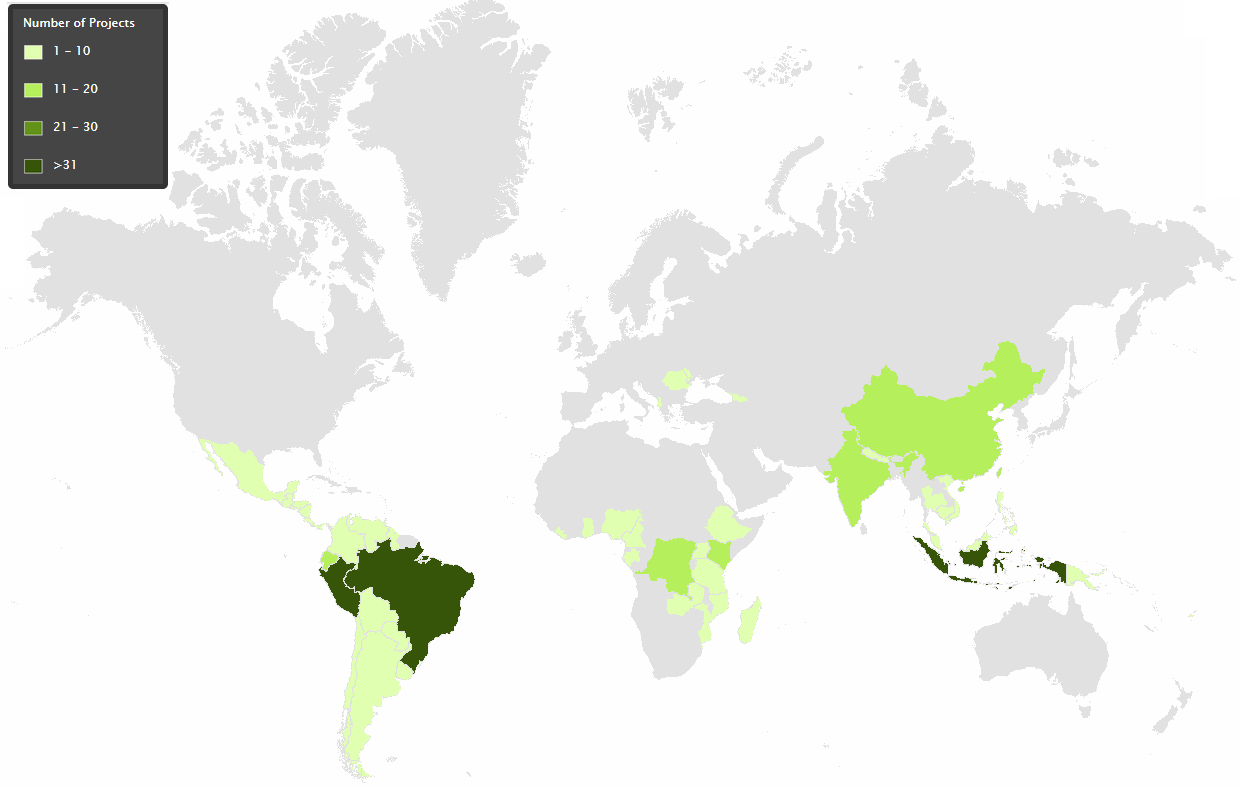
Dr Nadine Unger and other forest-science experts (here and at RealClimate) have recently written about whether saving forests will reduce future climate change. Dr Unger mentions a recent "landmark deal" on sustainable forestry and suggests it's a "bad bet", the others disagree.
I'm convinced that it's a very good bet. If we want to limit global warming, then we have a carbon budget that we can spend, and we can spend this budget by chopping down trees or by doing other things like burning oil and gas. The "landmark deal" aims to keep carbon locked up in forests, clearing space in the budget. Dr Unger argues that planting trees doesn't always help the climate, but her technical points are not really relevant to the tropical forests covered in this particular "landmark deal".
One way in which trees affect temperatures is that they tend to be darker than grasses or snow. Just like how a black car feels hot to the touch on a bright, sunny day, trees absorb extra heat and warm up.
This is balanced by how they absorb carbon. Clearing forests releases this carbon (mostly) as carbon dioxide (CO2), a warming greenhouse gas. There are other processes too, and researchers have calculated the total effect that forests have on temperatures. Dr Unger mentions the surprising result that planting trees in colder areas can boost warming (e.g. Bonan et al., 2008).
However, tropical forests are very dense. Powered by bright sunlight year round and fuelled by heavy rainfall, they suck up enormous amounts of carbon. There's wide agreement that they have an overall cooling effect, and one of Dr Unger's own references (Jackson et al., 2008) states straight up that "Tropical projects—avoided deforestation, forest restoration, and afforestation—provide the greatest climate value".
In general, one of Dr Unger's points is that in many developed countries, like the US and UK, planting trees isn't going to help reduce global warming. This is probably true, but not relevant for the "landmark deal" under discussion. This is about Reducing Emissions from Deforestation and Forest Degradation (REDD+) in Developing Countries (more details are in a note that I researched and wrote for the UK Parliament).
Here's a map of countries doing REDD+ projects. It's dominated by tropical forests in countries like Brazil, Peru and Indonesia.

Figure 1 Map of countries with current REDD+ projects, darker shade means that the country has more projects. Modified from this map, produced by CIFOR.
The UN has a target to prevent global warming from going above 2 C (3.8 F). From 2011, the entire remaining budget was about 1,100 billion tonnes of carbon dioxide (IPCC, 2013).
We expect to release about 400 billion tonnes of CO2 from forests this century (Gullison et al., 2007), meaning everything else can release 700 billion tonnes of CO2. However, successful REDD+ could save forest carbon and boost the "everything else" budget by more than 50% to 1,100 billion tonnes of CO2.
However, the International Energy Agency says that there are already almost 3,000 billion tonnes worth of CO2 in "proven reserves" of coal, oil and gas, and we're looking for more (World Energy Outlook 2012). In the fight against climate change, REDD+ is a hefty punch, but we don't score a knock out until we decide to leave lots of fossil fuels in the ground. These would be the "unburnable" fossil fuels.
Why not think of forests in the same way? As long as they're intact or well-managed, then they store lots of carbon just like an oil field or coal seam. Instead of destroying rainforest we could destroy some oil fields instead. Regardless of what we do though, at least two-thirds of reserves are going to have to stay in the ground. At least, until industrial scale carbon capture and storage (CCS) is demonstrated and funded on an enormous scale.
Investing in Tropical Forests is a Good Bet
All forests can provide enormous benefits. They keep productive soils around, they reduce flood damage, support important plants and animals and they are beautiful. These are good reasons for investing in forests, but the climate picture is more complex. Dr Unger points out that in some areas, planting a forest isn't going to have much climate-cooling effect. This is important if you're thinking about buying carbon offsets in temperate forests. But when talking about the "landmark deal" on REDD+, this is irrelevant. That deal is about tropical forests where there's a consensus that they reduce global warming.
REDD+ is technically very difficult to set up and make sure that it is clean and fair. But in scientific terms it's a very good bet for helping to reduce future global warming.
If we're going to hit the UN climate targets to limit global warming, and if REDD+ doesn't work, then we'd have to leave more fuels in the ground. If REDD+ does work, then we can risk burning those extra fuels. In fact, it buys us about 10 years of current fossil fuel burning. That leeway is worth having, but it's still absolutely necessary to slow down fossil fuel burning. Either way, the carbon from at least two-thirds of fossil fuel reserves has to stay in the ground.
Posted by MarkR on Thursday, 6 November, 2014
 |
The Skeptical Science website by Skeptical Science is licensed under a Creative Commons Attribution 3.0 Unported License. |